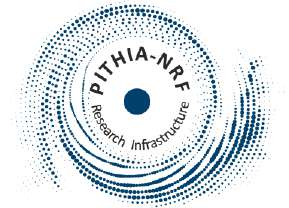Dr. Keisuke Hosokawa is a scientist/space physicist investigating the environment of the planetary upper atmosphere (ionosphere and magnetosphere). He completed a doctorate in solar-terrestrial physics at Department of Geophysics, Graduate School of Science, Kyoto University. He is now a professor in Department of Communication Engineering and Informatics, The University of Electro-Communications, Tokyo.
He will give a seminar during his visit about his research for which he collaborates with Romain Maggiolo and Gaël Cessateur.
Title: Two cases of unusual aurorae on Earth: polar rain aurora and CDPS aurora
Abstract: Two unusual types of aurorae on the Earth are introduced, one from the central polar cap and the other from the nightside auroral region. The first one is an exceptionally gigantic aurora filling the entire polar cap region when the solar wind almost disappeared on Dec 25-26, 2022). By combining ground-based and satellite observations, we proved that this unique aurora was produced by suprathermal electrons streaming directly from the Sun, which is known as “polar rain.” High-sensitivity imaging from the ground has visualized complex spatial structures of the polar rain aurora possibly manifesting the internal pattern of the solar wind or even the organizations in the chromosphere of the Sun. The second one is a faint reddish aurora, captured in Tromsoe and Skibotn, Norway on Nov 12-13, 2023. The faint reddish aurora appeared in the pre-midnight sector and continued for more than 5 hours, manifesting continuous low-energy electron precipitation without any substorm activities. Subsequently after the prolonged interval of faint reddish aurora, extremely bright greenish aurora appeared indicating that substorm occurred with precipitating electrons whose flux was much higher than usual. IMF was strongly almost purely northward during the faint reddish aurora and turned southward slightly before the appearance of extremely bright greenish aurora. During prolonged intervals of northward IMF, cold and dense plasma population is often seen in the plasma sheet, which is known as cold dense plasma sheet (CDPS). The faint reddish aurora in the evening of Nov 12, 2023 may be a signature (i.e., optical manifestation) of CDPS in the magnetotail, which has not been captured ever from the ground at the auroral latitudes. We speculate that CDPS was being formed during the prolonged period of northward Bz without any substorm activities. Sudden southward turning of IMF led to the occurrence of substorm with well-accumulated cold/dense plasmas in the plasma sheet. The prolonged northward Bz condition and subsequent southward turning of IMF probably made this observation largely different from typical aurorae.
When: March 13, 13:30
Where: Room 1 & 2, ROB directors house
Online: https://us06web.zoom.us/j/87641310465?pwd=Mvub9QcPn1jtFZBPMRbAoKAV9Hefa4.1





